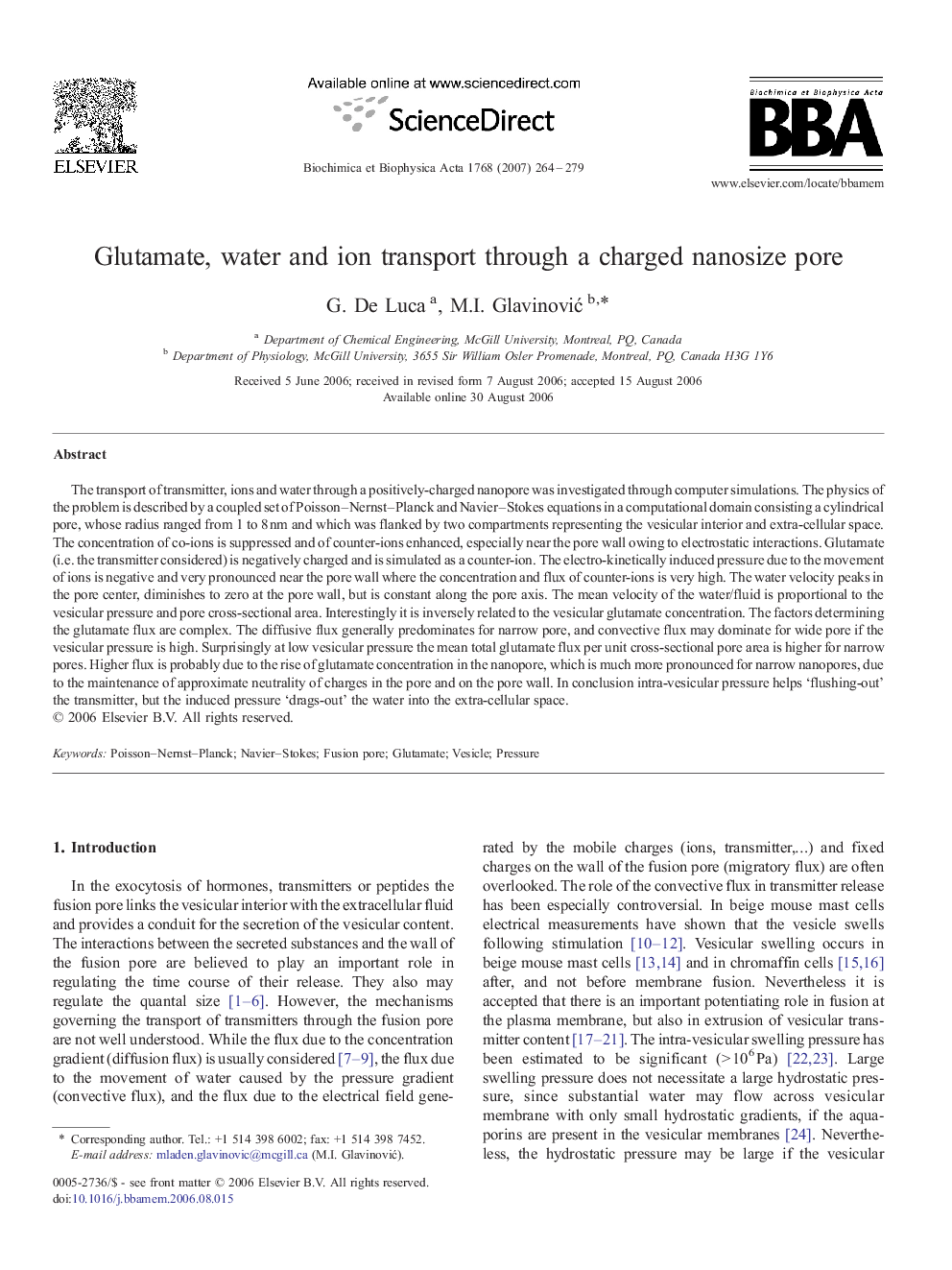| کد مقاله | کد نشریه | سال انتشار | مقاله انگلیسی | نسخه تمام متن |
|---|---|---|---|---|
| 1945951 | 1053281 | 2007 | 16 صفحه PDF | دانلود رایگان |

The transport of transmitter, ions and water through a positively-charged nanopore was investigated through computer simulations. The physics of the problem is described by a coupled set of Poisson–Nernst–Planck and Navier–Stokes equations in a computational domain consisting a cylindrical pore, whose radius ranged from 1 to 8 nm and which was flanked by two compartments representing the vesicular interior and extra-cellular space. The concentration of co-ions is suppressed and of counter-ions enhanced, especially near the pore wall owing to electrostatic interactions. Glutamate (i.e. the transmitter considered) is negatively charged and is simulated as a counter-ion. The electro-kinetically induced pressure due to the movement of ions is negative and very pronounced near the pore wall where the concentration and flux of counter-ions is very high. The water velocity peaks in the pore center, diminishes to zero at the pore wall, but is constant along the pore axis. The mean velocity of the water/fluid is proportional to the vesicular pressure and pore cross-sectional area. Interestingly it is inversely related to the vesicular glutamate concentration. The factors determining the glutamate flux are complex. The diffusive flux generally predominates for narrow pore, and convective flux may dominate for wide pore if the vesicular pressure is high. Surprisingly at low vesicular pressure the mean total glutamate flux per unit cross-sectional pore area is higher for narrow pores. Higher flux is probably due to the rise of glutamate concentration in the nanopore, which is much more pronounced for narrow nanopores, due to the maintenance of approximate neutrality of charges in the pore and on the pore wall. In conclusion intra-vesicular pressure helps ‘flushing-out’ the transmitter, but the induced pressure ‘drags-out’ the water into the extra-cellular space.
Journal: Biochimica et Biophysica Acta (BBA) - Biomembranes - Volume 1768, Issue 2, February 2007, Pages 264–279